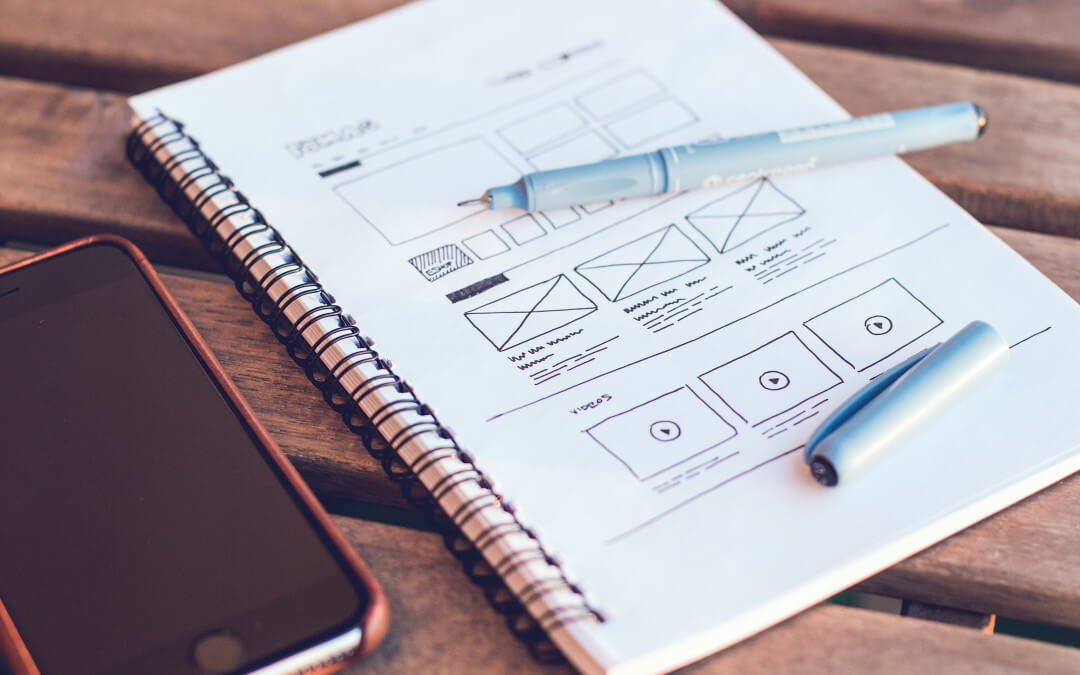The Brand Design Journey
If you’re looking for a brand design or redesign, you’ll need more than a logo or a new website. Brand design is bigger than that. Designing a brand entails designing every moment and experience people have with your brand. It’s about every touchpoint, and these days nothing goes unnoticed. Brand design reflects how your brand looks and how it feels.
This means colors, graphic language, typeface, photography, and your logo. In the end, brand design is what brings the brand to life. It’s what makes your brand recognizable and powerful to the people that matter to your business. Because developing your brand design is no easy task, it’s easy for businesses and the people behind them to fall into common design traps. So before your brand engages in design work, consider these five common mistakes, why they are problematic, and how to avoid them.
1. Designing for tomorrow and not today
In a world where digital innovation and advancement is critical to a brand’s survival, brands need to be designed for new technology. Fluidity and flexibility is key here. The digital landscape requires adaptability. And in order to maintain brand relevance, brands need to anticipate how they will compete in the future market. Stagnant brands simply don’t create powerful brand experiences. Every touchpoint and interaction counts. Designers who want to design a powerful brand with a strong emotional impact, one that will stay relevant over time, and drive business in a sustainable way need to design with the future of the brand in mind. This means taking an adaptable, dynamic, digital, experiential, and always forward thinking approach that aligns with the brand’s vision and aspirations.
2. Playing lookalike
Differentiation in branding is of great importance. Yet many brands take the safe route. And as a result, brands end up looking similar to competitors or adapting to the short-lived design trends of the month. Even though design is supposed to help brands stand out, the design landscape continues to be filled with brands that quite honestly, look and feel the same. And sameness doesn’t move a business forward. Designing a brand requires taking risks. It takes courage. You have to be bold. And we know it’s not always easy. Challenge yourself and your clients to design brands that aren’t afraid to say something different.
3. Forgetting about guidelines
Your agency or company could build the most prolific visual identity, pick the perfect colors, or create a logo that could change the entire game. But the fact is, a brand can’t come to life if the visual identity isn’t rolled out correctly. Businesses often overlook the importance of brand guidelines because they aren’t easy to create. No one wants to create or read a manual. However, people need a roadmap for keeping the brand consistent and powerful. Brand guidelines give businesses the tools people need to bring the brand to life, keeping it clear, consistent, and recognizable. Brands without brand guidelines often end up inconsistent, valueless, and unable to grow. If you want to make the brand rollout a success, you need guidelines.
4. Overcomplicating it
Simplicity and clarity is key for brand design. Complicated brand design ends up diluting the brand’s overall emotional impact and making the brand less recognizable to the people who matter to its success. However, it’s important that when straying away from overcomplicated you make sure you understand your audience and don’t dumb it down for them. Simple doesn’t mean banging your audiences across the head. Working as a team and eliciting feedback at multiple points of the process can help move the design towards clarity and simplicity.
5. Ignoring Strategy
Tying strategy with design is one of the most important things a brand can do. Use strategy as a guiding map for how the brand should come to life visually. Even though strategists and designers often have different toolboxes, marrying the two skillsets and ways of thinking can help build a more impactful, purposeful brand. Often times, clients want design that has nothing to do with the strategy that’s been developed. Make sure you explain the impact that strategically informed design can create, and demonstrate the power of strategically informed design. By bringing design and strategy together, your brand becomes more valuable and impactful.
Brand Design for Maximum Impact
Design a brand that engages your target audience and generates demand. One that will be able to adapt to digital advances, increased customer experiences, and heed off competition. Use your visual identity to help your brand stand out and highlight what makes you stand out. Keep it simple. Use your strategy to lead you in, and don’t forget to create the guidelines the brand needs for a successful rollout. If you avoid these five mistakes, the brand will be more powerful to its audiences, and more able to move business forward. The brand design will support the brand as it grows and prospers in a competitive design landscape.
Read another post from our design team: Brand Identity: What’s Your Type?
Emotive Brand is a San Francisco brand strategy and design agency.






This is an excellent article for those who are interested in brand design. I recently read a good article on a similar topic. It just tells how everything should be. I recommend to anyone interested: https://blog.codeharbor.dev/2022/04/27/brand-design/